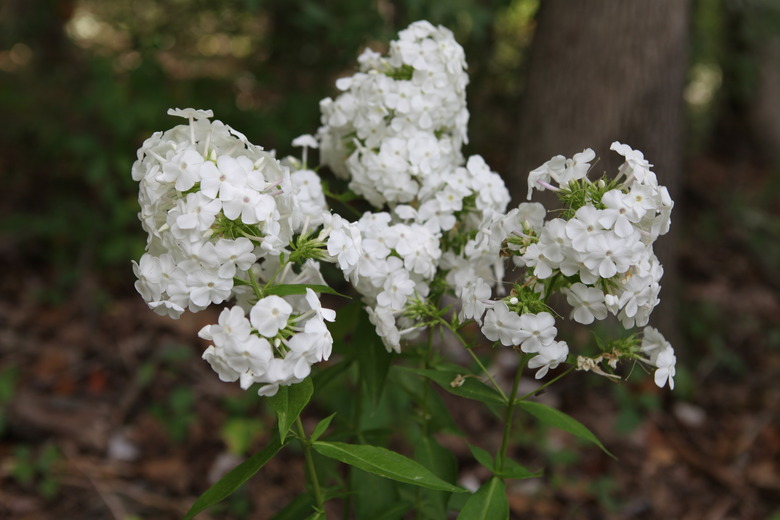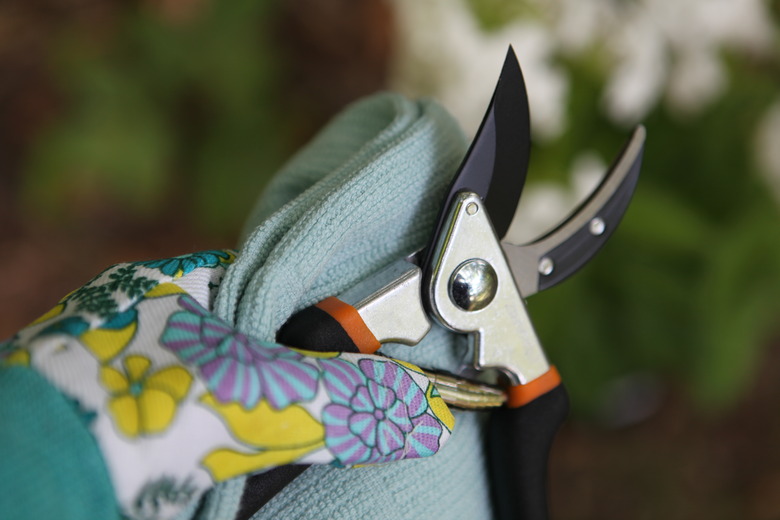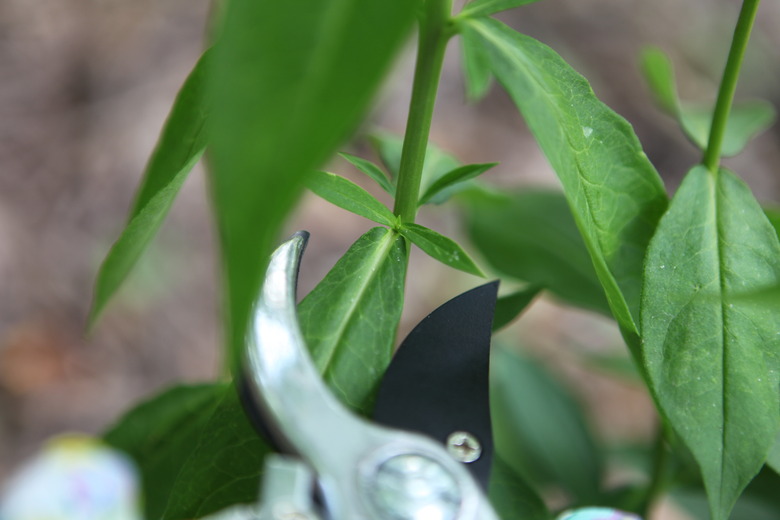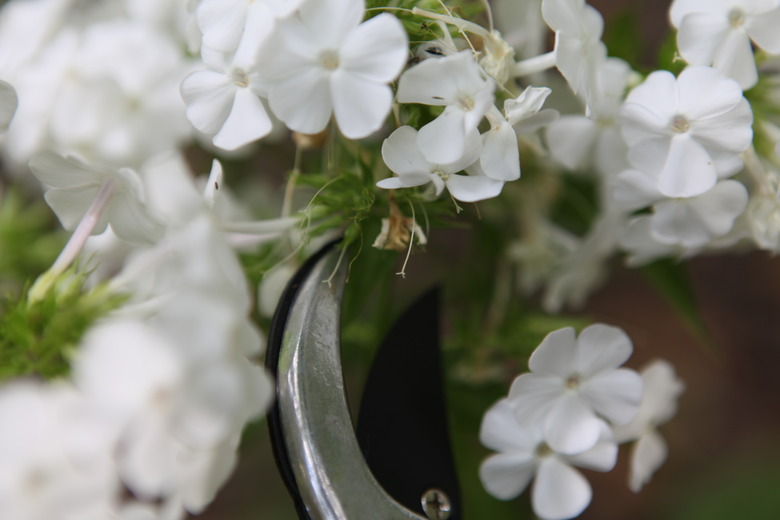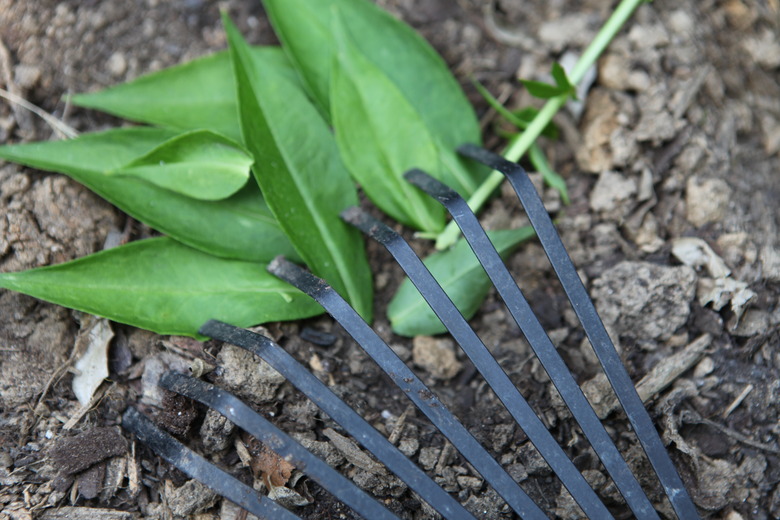How To Prune Phlox
Garden phlox-down-winter-10269.html)-down-winter-10269.html) (Phlox spp.) produces spikes of flowers that bloom during the summer months. Phlox is hardy in U.S. Department of Agriculture plant hardiness zones 2 through 10, depending on the variety. The plant requires some pruning to keep it healthy and to encourage it to develop its best flowering habits.
Keep it Clean
Your fingers and a small pair of bypass shears can handle all your phlox pruning needs. Disinfecting the shears before you prune helps prevent the spread of insects and diseases among plants. Wipe the shears with a cloth that was soaked in isopropyl alcohol before you begin pruning and again after pruning to remove fungal spores and disease pathogens. Wash your hands before working with phlox or wear clean garden gloves during the work as a further measure to prevent plant disease problems. Phlox is especially prone to fungal problems, which easily spread from plant to plant when good garden hygiene isn't practiced.
Thin it Out
Garden phlox (Phlox paniculata), which grows 2 to 4 feet tall and is hardy in USDA zones 4 through 8, benefits from thinning early in the growing season. Trim out all but five or six of the strongest stems when the plant grows to a 6-inch height, removing the stems near the base of the plant with disinfected pruning shears. Thinning allows the remaining stems to grow strong and flower well; it also provides the air circulation needed to minimize powdery mildew problems later in the season. After thinning the plant, grasp the tip of each stem between your thumb and forefinger, and pinch it off right above the topmost growing bud. Pinching the stems results in a bushier plant with fuller flowers.
Cut it Back
Deadheading — removing old flowers — prevents seed formation, which encourages some phlox varieties to put forth new growth and new flowers. It also cleans up the plants for an improved appearance and mildew prevention. Trim off garden phlox's dead flower stems at their bases immediately after the plant finishes blooming. Shorter phlox varieties such as creeping phlox (Phlox stolonifera), hardy in USDA zones 4 through 8, and moss phlox (Phlox subulata), hardy in USDA zones 2 through 8, need to be cut back after they finish flowering. Trim back the entire plants by one-third to one-half their height.
Stop the Mildew
Pruning and cleanup after a trim helps prevent the most common phlox ailment, powdery mildew. The mildew creates a powdery white film on the plant's foliage and flowers, blocking sunlight and eventually causing the plant to weaken and die. Trim off badly infected stems and leaves anytime during the growing season to minimize the spread of this disease. Disinfect your pruning shears after every cut to kill the mildew spores, and wash your hands after handling the diseased phlox. Rake up all fallen leaves and pruning clippings immediately so they don't harbor spores near the phlox.
